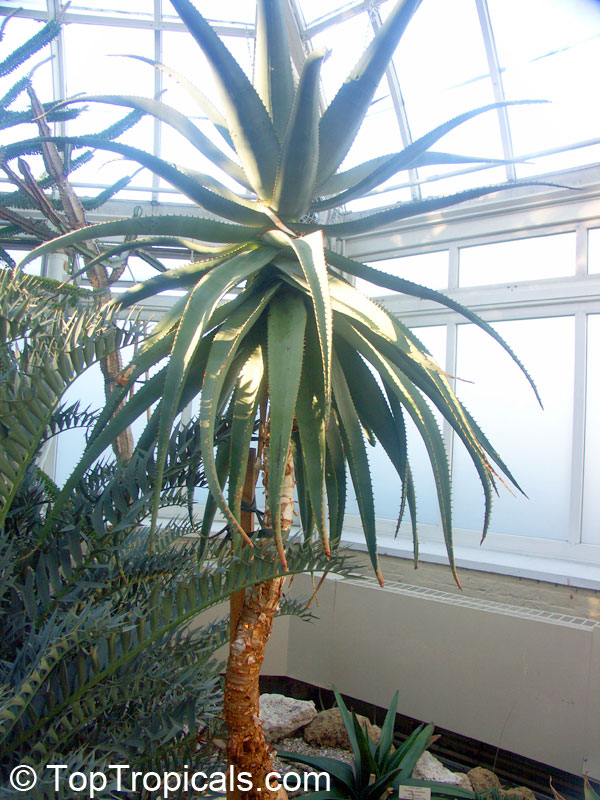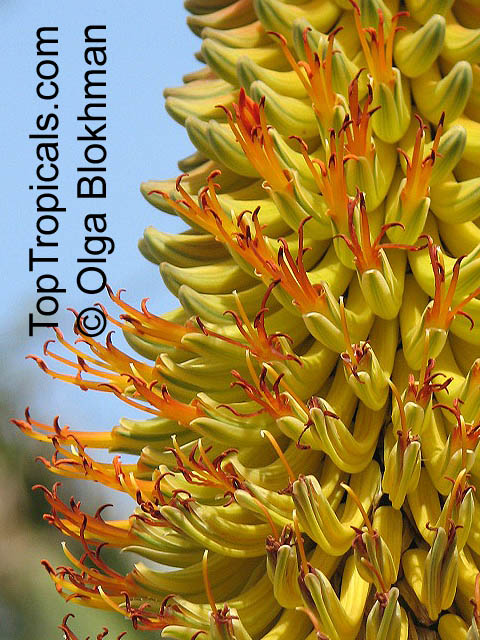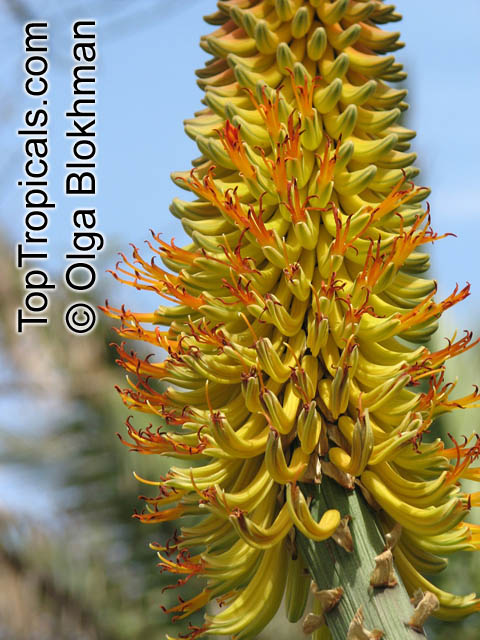Aloe africana (African Aloe)
Top Tropicals Plant Encyclopedia
Botanical name: Aloe africana
Common name: African Aloe
Family: Asphodelaceae (Formerly:Xanthorrhoeaceae)
Subfamily: Asphodeloideae
Origin: South Africa








Native to South Africa, it is a small, slow-growing tree of about 10-20 feet in height and width with an attractive trunk with lighter-colored markings and bark. It is an evergreen or semi-evergreen plant with narrow, gray-green leaves that feature white tubercles on their surfaces.
When planted outdoors in the ground, Aloe africana prefers full sun and moderate water during the summers and should be kept dry during the winter months. When grown in a pot, it can be kept outdoors in USDA zones 9-11, or brought indoors and kept in a bright location during the winter months.
The African Aloe blooms an abundance of yellow and orange tubular-shaped flowers during the winter months, making it a very attractive addition to any garden. The blooms attract both butterflies and hummingbirds, and the plant itself is known in ethnomedicine as an essential remedy.
Although Aloe africana is a beautiful plant, it is also somewhat spiny or thorny, and should be handled with caution. When grown in cold regions, the plant should be placed in a pot to protect it from cold temperatures which can cause tissue damage. Make sure to use a well-draining potting soil and containers with drainage holes and avoid overwatering. Place the pot in a sunny location and be sure to fertilize them regularly, and you can enjoy the beauty of African Aloe in your garden!
Similar plants: Aloe africana (African Aloe)
- Aloe arborescens (Tree Aloe)
- Aloe aristata (Torch Plant)
- Aloe erinacea (Goree)
- Aloe haworthioides (Haworthia-leaved Aloe)
- Aloe humilis (Spider Aoe)
- Aloe juvenna (Tiger Tooth Aloe)
- Aloe marlothii (Mountain Aloe)
- Aloe plicatilis (Fan Aloe)
- Aloe sp. (Aloe)
- Aloe speciosa (Tilt-head Aloe)


